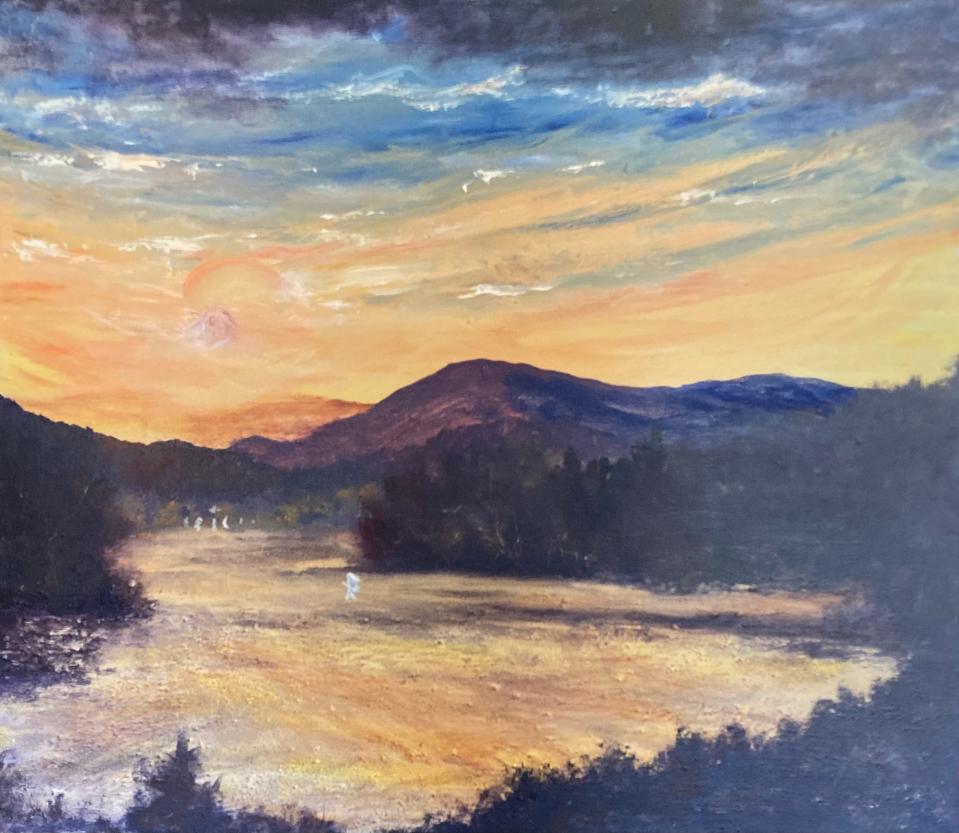Nature Journal: Coming back home to the mountains

It is my considered opinion that an informed sense of place is comforting. I firmly believe that knowing “where” you are can help you discover “who” you are. Here are some rambling thoughts in that regard.
For a number of years my wife, Elizabeth, conducted a watercolor workshop at the Appalachian Center for Crafts, which is located near Cookeville, Tennessee. We always camped in our popup trailer at Erwin State Park, a facility alongside Center Hill Lake just south of I-40. I tagged along to do the driving and study the terrain while she was working.
Situated just off the western edge of the Cumberland Plateau on the rim of the Nashville Basin, it’s interesting terrain composed primarily of limestone and other sedimentary materials. Accordingly, it’s a broken landscape featuring low ridges, ravines, waterfalls, caverns and sinkholes.
Nature Journal: Vines give evidence of the seething energy underlying plant strategies
I had a fine time driving around all day, making the occasional stop to check out promising habitats and trails. There are several nice taverns in Crossville. Our German shorthaired pointers, Maggie and Zeke, now dead, were always with us. They also enjoyed riding around looking at the scenery. Dogs like scenery … any sort of scenery. Their “sense of place” is instantaneous. But by week’s end, all four of us were ready to go home. We were glad to break camp and “get back to the real mountains.”
We always say that when we’ve been away somewhere for a week or more. It set me to thinking as we drove east on I-40. Why are we attracted to mountains? Why do so many of us choose to live among them and long to get back to them when we have to leave?
As we were bypassing Newport, Tennessee, we could see the northeastern end of the Smokies looming in the distance. It seemed to be pulling us with a magnetic force. After taking the Cosby roadway south down to Gatlinburg, we finally made the turn into the national park and started winding up toward Newfound Gap. As we passed into North Carolina we looked out over mountain range upon mountain range fading into the distance. Not many miles below Newfound Gap was the little cove at the mouth of Lands Creek where we’ve lived for 30 years. That’s home. It is, as we say, “in the mountains.” The air was cooler than in middle Tennessee. The vegetation more varied. The trees were bigger, the creeks swifter, the views longer. These were, after all, “the real mountains” -- not just ridges.

John Jerome, one of my favorite writers, said this in the closing paragraphs of his “On Mountains: Thinking About Terrain” (McGraw-Hill, 1978):
“Gradient is the elixir of youth. ... The flatlands are dead; it is all over for them. ... [They are] worn down to sea level, the lowest common denominator, the ultimate dull average. How weary, stale, flat, and unprofitable the uses of such a world. Static versus dynamic. What the mountains tell us, in their soaring ridges and plummeting scarps, is that, yes, the land is cut low, time and time again [but] it is always restored. ... There are new mountains to come, everywhere, so long as there is an earth to thrust them up -- mountains more magnificent, perhaps, than all that have ever been seen before. Ah, but we can’t know that for sure, and the ones we have now are coming down pebble by sand grain. The mountains we have are unique; they may be surpassed, overshadowed, but they’ll never be duplicated …we’d better go pay them some attention now, while they are here to inspire us.”
More from Nature Journal: Jack-in-the-pulpit red berries stand out against leaf litter
When I wake up in the morning, I sometimes ask myself, “Where am I?” I have a mental checklist that I recite to myself. It goes like this: “George, here you are in the Great Smokies about three miles west of Bryson City, North Carolina, in a small cove traversed by a sparkling creek whose waters flow from under Clingmans Dome past your house and back into the park one last time down to a small waterfall without a name where there is a crude bench you fashioned years ago from cinderblocks and a plank upon which you can sit and watch the water flow by as it descends into what is the howling desolate moonscape of the lower Tuckaseigee in winter or placid Lake Fontana in summer … Little Tennessee ... Tennessee ... Ohio ... Mississippi ... and on down to the Gulf of Mexico. The Smokies … a massive mountain range on the western front of the Southern Blue Ridge Province … are just a piece of the jigsaw puzzle -- an extension of the Northern Blue Ridge Province. The Blue Ridge Province itself is a part of the unglaciated Southern Appalachians, an extension of the glaciated Northern Appalachians. The Appalachians are a mountainous region extending from the Gaspe Pininsula in Canada to north Alabama in eastern North America, which is situated in the western hemisphere on this sweet planet Earth.” Then I roll over and go back to sleep.

George Ellison is an award-winning naturalist and writer. His wife, Elizabeth Ellison, is a painter and illustrator who has a gallery studio at 155 Main St., Bryson City. Contact them at info@georgeellison.com or info@elizabethellisongallery.com or write to 3880 Balltown Road, Bryson City, NC 28713.
This article originally appeared on Asheville Citizen Times: Nature Journal: Coming back home to the mountains

